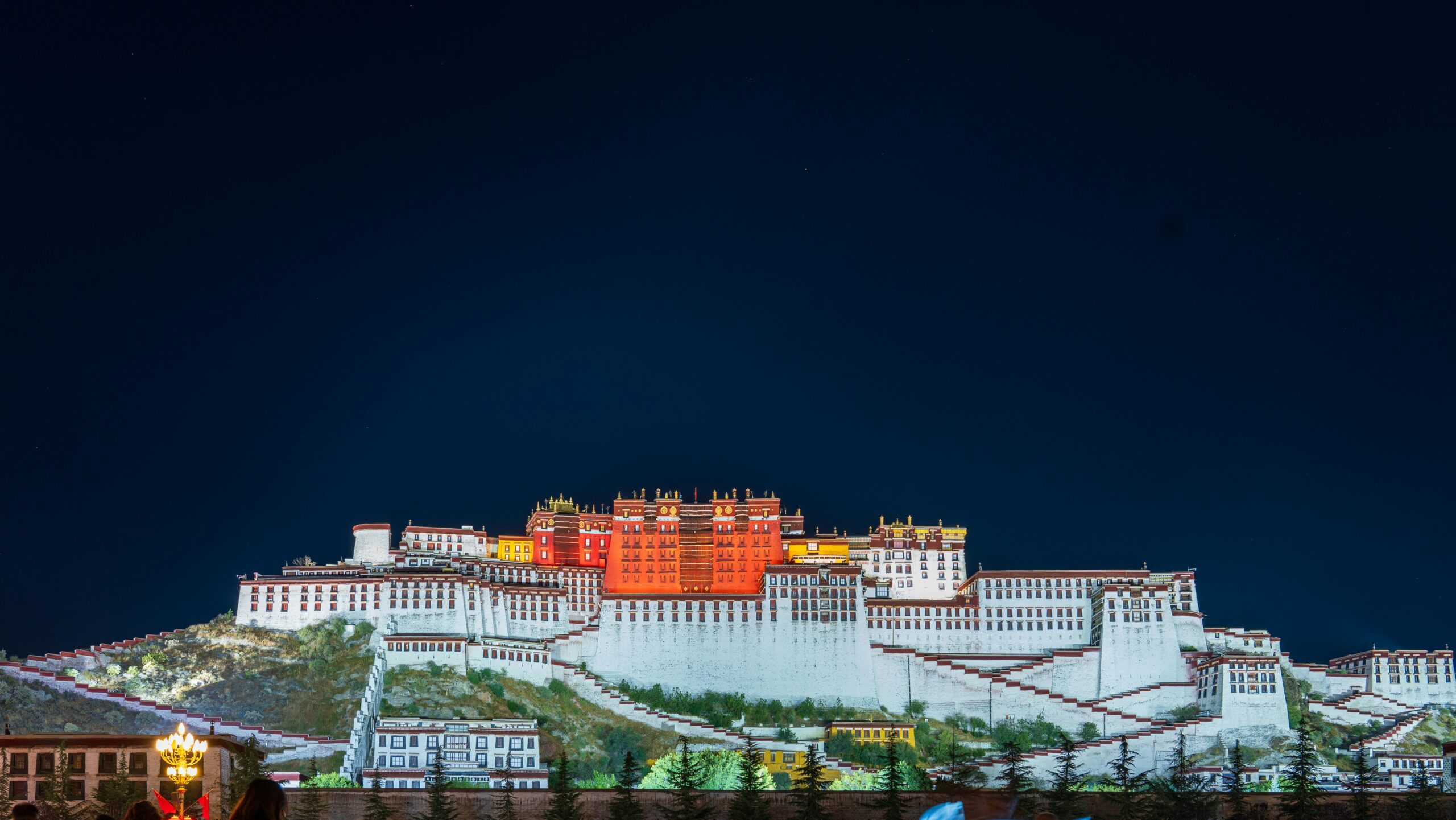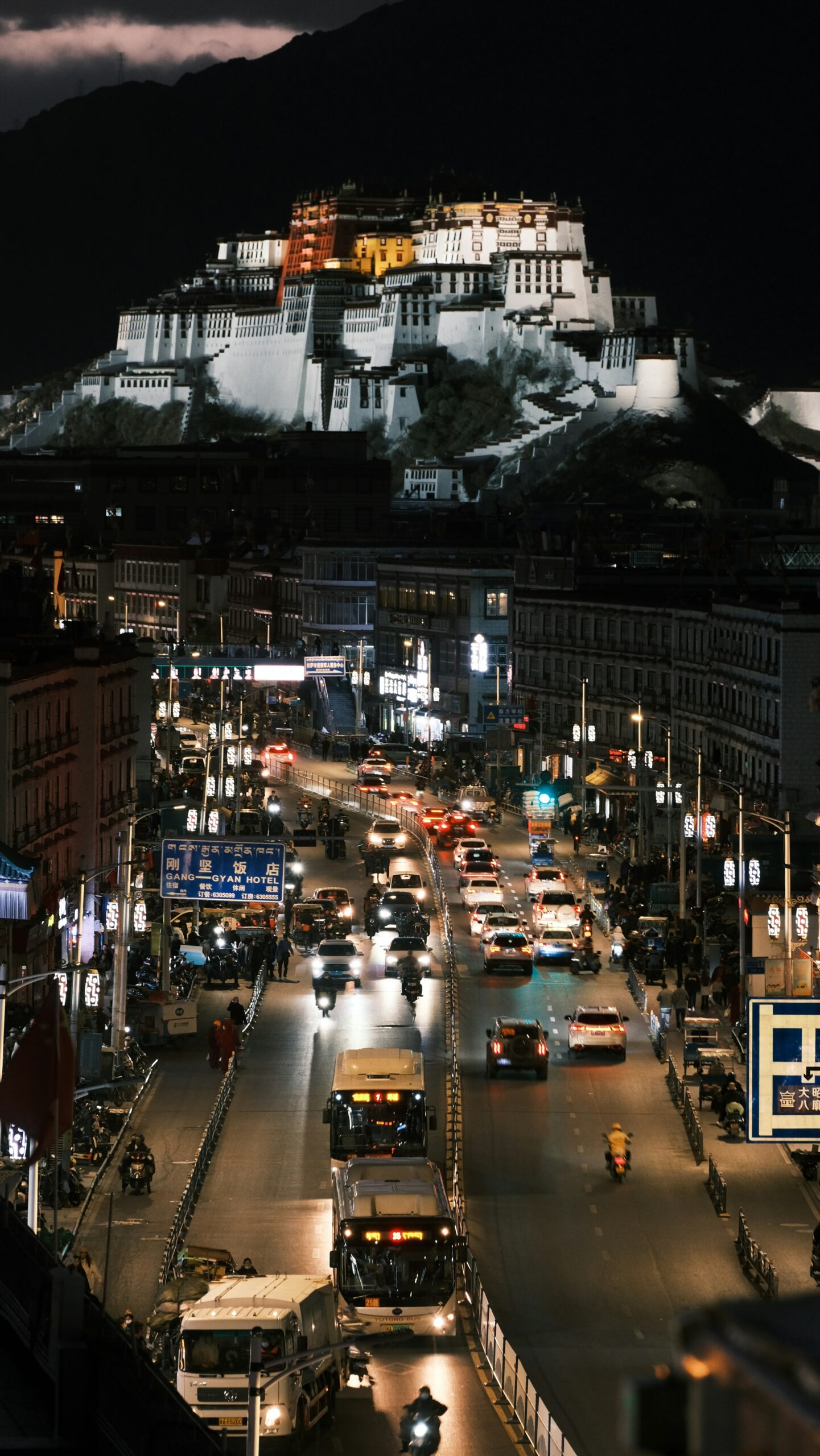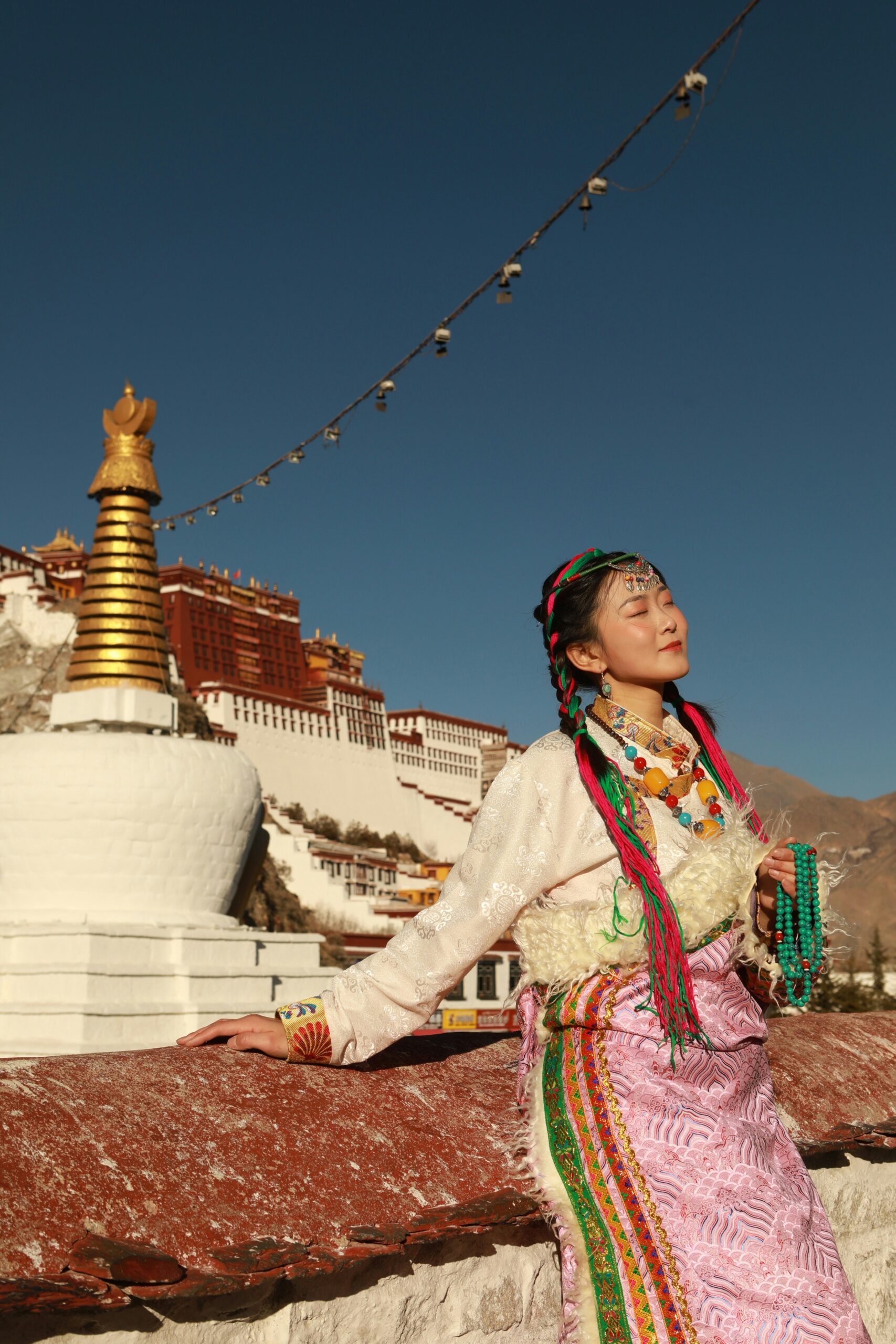16 Days
Moderate

High above Lhasa, the city of Tibet, the Potala Palace is a crown to the deep blue Tibetan sky. Its red and white walls shine in the sunlight, creating one of the most iconic structures in the world. It is not a building, but a classical representation of Tibetan history, culture, religion, and strength.
The Potala, which was once the winter house of the Dalai Lamas, is now a UNESCO World Heritage site and a destination for both pilgrims and tourists. This blog will take you through its history, architecture, treasures, spiritual importance, and what to expect when paying a visit to this marvelous site in Lhasa.
Quick & Interesting Facts About Potala Palace, TibetLocation: Lhasa, Tibet Autonomous Region, China Altitude: 3,700 m (12,100 ft) above sea level, making it one of the highest ancient palaces in the world Built On: Marpo Ri (Red Hill), 130 m above Lhasa Valley Original Fortress: Built in the 7th century by King Songtsen Gampo Grand Expansion: 17th century by the Fifth Dalai Lama (1645–1649) Height: 117 m (384 ft), roughly equivalent to a 13-story building Length: 400 m (1,312 ft) across the hill Rooms: Over 1,000 rooms, 10,000 shrines, and around 200,000 statues Construction Materials: Stone, wood, and earth mixed with natural whitewash and red ochre White Palace (Potrang Karpo): Dalai Lamas’ residence, government offices, and administrative halls Red Palace (Potrang Marpo): Chapels, shrines, and golden stupas of past Dalai Lamas Sacred Art: Houses more than 10,000 murals and thangkas, some over 300 years old Golden Roofs: Many temple halls are topped with golden roofs that shine under the Tibetan sun Treasures Inside: Sacred Buddhist scriptures, rare relics, ancient scrolls, and jeweled stupas Pilgrimage Site: Devotees perform kora (ritual circumambulation) around the palace, spinning prayer wheels and chanting mantras Symbol of Tibet: Once the spiritual and political heart of Tibet, still seen as the ultimate symbol of Tibetan identity and culture UNESCO Heritage: Declared a UNESCO World Heritage Site in 1994, later expanded to include Jokhang Temple and Norbulingka Altitude Challenge: Visitors often need time to acclimatize due to Lhasa’s high altitude Limited Access: Only about 2,300 visitors are allowed per day, with strict time limits inside No Photos Inside: Photography is forbidden in sacred rooms to preserve the spiritual atmosphere and delicate artwork Resilience: Despite centuries of natural and political challenges, the palace still stands strong Night View: The Potala Palace glows beautifully under night lights, creating one of the most iconic images of Tibet |

16 Days
Moderate
The history of Potala Palace starts in the 7th Century when King Songtsen Gampo constructed a fortress on Marpo Ri or Red Hill. It was also built as a strategic defense point because it overlooked the Lhasa Valley, as well as served as a royal palace because of his marriage to Princess Wencheng of the Tang dynasty, which enhanced the political and cultural links between Tibet and China.
The current form of the palace was formed during the 17th Century by the Fifth Dalai Lama. His vision turned the fortress to be turned into a grand palace that not only serves as the seat of government but also a spiritual home of Tibetan Buddhism. The palace was further expanded and enriched by the successive Dalai Lamas, and it became a stronghold in the center of Tibet.
The Potala Palace was more than a royal place; it was also the political, administrative, and spiritual center of Tibet for centuries. All the decisions of any consequence, religious or State, were affected by the action inside its walls.
The Potala Palace is proudly constructed at the Marpo Ri, or Red Hill, at an elevation of 130 meters above the Lhasa Valley. Its elevation and location provided a beautiful view of the city and acted as a natural fortification; therefore, it was a magnificent landmark and a stronghold.
The White PaLhasa’sotrang Karpo)This part of the palace served administrative purposes. It contained the living quarters of the Dalai Lamas, offices, and government chambers.
The Red Palace (Potrang Marpo): Dedicated to spirituality, it houses shrines, chapels, prayer halls, and stupas that enshrine the remains of past Dalai Lamas.
The Potala Palace is an architectural wonder—with over 1,000 rooms, massive stone walls, intricate woodwork, and a unique Tibetan style. Its resilience over centuries, despite harsh weather and political changes, speaks volumes about its extraordinary design.

Inside the Potala Palace, you will find:
The apartments of the Dalai Lamas, large audience halls, and the great east hall, where ceremonies are held, demonstrate the duality of the palace as a home of the kings and as a temple. There are also study rooms, prayer chambers, and libraries with ancient Buddhist scriptures that visitors are allowed to see.
The palace is full of spiritual and cultural life, which is reflected in the decoration of the halls with complex murals, gold statues, and ceremonial thrones. A lot of rooms were occupied with religious classes, official conferences, and essential rites, and the Potala Palace was a real hub of both bureaucracy and worship.
Ancient relics and ritual objects, complicated mandalas, there is not a single part of the Potala Palace that does not contain a fragment of the rich Tibetan cultural and religious heritage. There are jeweled stupas, sacred statues, fancy thangkas, and traditional musical instruments that visitors can admire, and which are used in Buddhist rituals. These pieces of art demonstrate not only the great skill of craftsmen but also reveal the story of the spiritual devotion of Tibet, its history, and artistic customs.

To the Tibetans, the Potala Palace is much more than an architectural wonder; it is the living symbol of Tibetan Buddhism. Hundreds of halls, murals, and stupas testify to centuries of worship, education, and spiritual life. It is an effective reminder of the legacy of the Dalai Lamas and still provides pilgrims and visitors with the aura of sanctity.
Each year, thousands of pilgrims come to visit the Potala Palace; some people come from long distances across Tibet and even farther. They also do kora, a ritual of circumnavigating the palace as a sign of devotion, engaging in prayer wheels and mantras. The inside is full of the light of butter lamps, and the low moaning of prayers that make the air deep with spirituality, and have not been changed in centuries.
The Potala Palace continues to be a great representation of the power of perseverance and belief, and it stands tall to this day as a monument to the centuries of transformation. For Tibetans, it represents not only their spiritual devotion but also their cultural identity and unity, inspiring hope and pride for generations to come.
Note: Travelling solo in Tibet is not allowed for foreign citizens, so you need to travel with the pilgrims of a travel agency. Also, you need to have a Chinese group visa and a Tibet travel permit, which the tour agency will arrange.
Potala Palace can be visited throughout the year, but the best time, or let’s say the best weather condition, is during the months of spring (April to June) and autumn (September to October). During this time, the weather conditions in Lhasa or Tibet are travel-friendly with mild, sunny, and clear weather.
If you are a photographer, then the best time to take photographs of the Potala Palace is either at sunrise or sunset. Also, according to the previous travellers, the palace glows like a jewel on Red Hill, and from 20:30 to 22:00, the music fountain and light show at Potala Palace Square create a spectacular finale, making it one of the most unforgettable moments of your Lhasa trip.
While visiting this palace, we suggest you not miss this palace:
The Potala Palace, a famous UNESCO World Heritage Site, is located in Lhasa, the capital city of Tibet. Visiting these renowned sites allows you to witness the Tibetan history, faith, culture, and traditions. It’s like a living museum where you can understand the story of kings, Dalai Lamas, and generations of pilgrims.